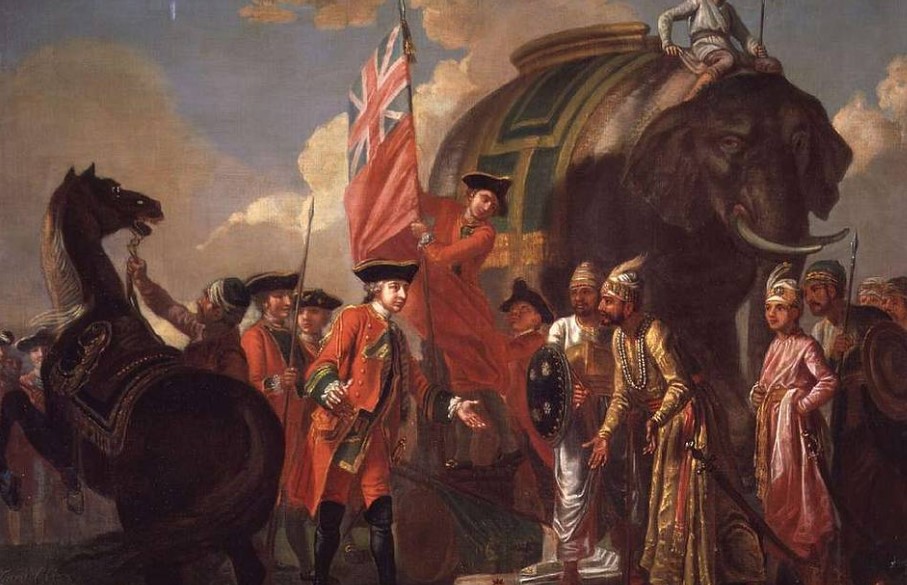
Battle of Plassey
Read in detail about the Battle of Plassey, its reasons, result and its significance in modern Indian History.
Home » UPSC Study Materials » CivilsCracker Explains » Modern History » Arrival of British East India Company
Read about the arrival of the British East India Company in India, their rise and expansion in various parts of India as traders.
After the discovery of an alternate route from Europe to India via Cape of Good Hope by Portuguese traveler Vasco da Gama, a new gate was opened for the European powers to trade with India.
As word spread about the great profits made by the Portuguese in Eastern trade, English businessmen wanted to take part in this profitable trade.
As a result, in 1599, the ‘Merchant Adventurers’, a group of English merchants, created the English East India Company.
The English East India Company under the name “Governor and Company of Merchants of London Trading into the East Indies” on 31 December 1600 was granted authorization and exclusive rights to trade with the east by the Royal Charter issued by the Queen of England, Elizabeth I.
The English East India Company sent Captain Hawkins to the court of the Mughal Emperor, Jahangir in 1608 to secure permission to establish a factory at Surat.
He was able to persuade the emperor to grant a commission for an English Factory at Surat but the permission was later withdrawn under pressure from the Portuguese. However, in 1613, Jahangir agreed and issued a firman permitting the East India Company to establish its first factory at Surat.
English established their second factory at Masulipatnam in 1616.
In 1639, the British purchased the land in Madrasapattinam from Raja of Chandragiri and established Fort Saint George there which later became the part of Madras Presidency.
In May 1661, as per the marriage alliance between Charles II of England and Catharine of Braganza, the Portuguese king’s daughter, Bombay was given to Charles II as dowry.
In 1668, a royal charter was issued which gave Bombay to the East India Company for the rent of 10 pounds per year.
By the year 1690, the East India Company purchased three villages namely, Sutanuti, Govindpur and Kalikatta, which later grew into the city of Calcutta. The British built another fort here and named it Fort William after the English King William III.
All the factories and trading centers which the English established along the coast of India were placed under either Bombay, Madras or Calcutta Presidency. Cotton, indigo dye, silk, salt, saltpeter, opium, and tea were the principal commodities of trade.
In July 1717 the emperor issued a farman (royal order) whereby the British were allowed duty free trade in Bengal in lieu of Rs. 3000 per annum.
The company was also allowed to mint their own coins and use it throughout India.
With the passage of time, trading privileges enjoyed by the company started hurting the finances of Nawab of Bengal. The Company’s officials also abused their trade privileges which was not liked by Nawab.
Above mentioned and many other reasons created a rift in relations between the British and Nawab of Bengal Siraj-Ud-Daula which ultimately culminated in the Battle of Plassey.
We this, we conclude this topic here.
You can read complete modern history explained series here.
You can read complete modern history summarized notes here
You can solve modern history chapter-wise MCQs here.

Read in detail about the Battle of Plassey, its reasons, result and its significance in modern Indian History.

Read in detail about three Carnatic wars that occurred between English and French to establish their hegemony in India.

Read in detail about arrival of French, the empire they built and their subsequent decline in India.

Read in detail about arrival of Portuguese, the empire they built and their subsequent decline in India.
We are adding new Notes, Chapterwise MCQs, Quizzes, Previous Years Questions everyday
We are adding new Notes, Chapterwise MCQs, Quizzes, Previous Years Questions everyday